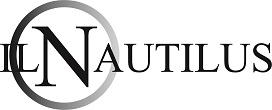Venice is slowly sinking
Massive waves from the city’s speedboats are causing irreparable damage to the iconic buildings. But what if all the taxis, ambulances and commuter ferries that serve as the city’s main form of transportation could fly above the water, without making wakes – and be electric? On Monday, the revolutionary Candela C-7 electric hydrofoil boat will be back in town for a public demonstration of its unique capabilities.
In the 1950’s gas powered motor boats came to Venice, increasing the speed and efficiency of water transportation. But they also created the problem known to Venetians as Moto Ondoso – wake induced damage – that threatens to erode the foundations of Venice. The 800-year old buildings are built on wooden pillars not designed to withstand the high-energy impact from the swells created by the city’s fleet of diesel-burning speedboats.
The wakes are seen as such a problem, that Gondoliers and activists repeatedly have demonstrated against speedboats by blocking the city’s waterways.
Hailed by the media as the “savior of Venice”, the Swedish-made Candela is an entirely new kind of craft that brings hope of saving the city’s unique cultural heritage from destruction – and make transports even better and faster than today.
Flying on computer-aided hydrofoils, Candela C-7 is the first electric craft with long range at high speed. Using computers and software to fly above the waves, it needs 80% less energy than conventional motorboats – and a welcome side effect is the almost total absence of wake. Causing a less-than-5cm high wake, the silent Candela C-7 can be flown at a speed of up to 30 knots (55 km/h) in urban waters without causing damage to buildings, canals, or other boats, such as gondolas.
Embedded media – Click here to see the full story in your browser
Thanks to a recent investment of €24m from Europe’s premier investment company EQT Ventures, Candela will now scale its hydrofoil technology to several commercial vessels. The company is developing the 30-passenger shuttle ferry Candela P-30 for the City of Stockholm, a vessel that is very similar to the Vaporettos (water buses) currently used by the Venetians.
- A P-30 would not only be faster, but also a more comfortable ride than today’s diesel ferries since it flies above the swells and chop. But the most important aspect is that it will not create any Moto ondoso, says Gustav Hasselskog, the CEO of Candela Technology.
Candela P-30 will also be vastly more economical to operate than today’s diesel ferries. According to data provided by the Region of Stockholm, the first customer, P-30 will have 40% lower operating costs than Stockholm’s similar-sized diesel vessels.
Simultaneously, Candela is also working on the Candela P-12, which is a 12-person water taxi resembling the classic Venetian taxi boats. The difference, again, is that the foiling P-12 will not create wake and uses considerably less power at high speeds: only about 30 kW, or 40 horsepower, operating at a speed of 20 knots. Traditional taxi boat are often equipped with 250-to 300 hp diesel engines.
- The Candela P-12 would be the perfect shuttle boat going from Marco Polo Airport to the city. This particular stretch of water is also pretty rough, with crisscrossing waves that can cause discomfort. Flying above the water surface would mean a much better experience for passengers, says Gustav Hasselskog.
On Monday, December 20, Candela will demonstrate its revolutionary hydrofoil technology to press and media in Marina Santelena, Venice. Please email Mikael.mahlberg@candela.com or call +46765376678 for an appointment.









